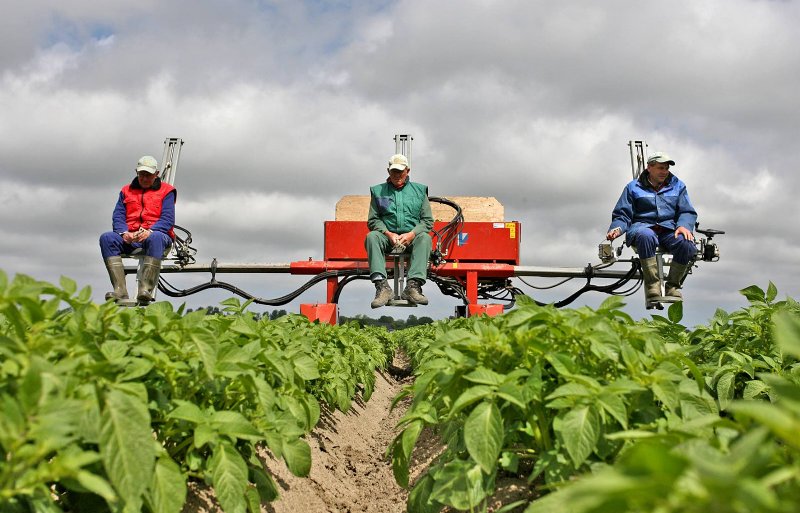Land availability, rising social and regulatory pressures, and soaring costs are also major challenges for seed producers. But in general, the sector is optimistic about the future. Growing profitably requires that the payout prices offered by trading houses provide sufficient compensation for the extra commitment to sustainability and more expensive growing.
“We value the investment we’re making to make our company’s seed production more sustainable at €35,000 a year,” says breeder Kees van der Bos from Holwerd, Friesland. “But we can’t get rid of these additional costs in the market just yet, and our revenue model is under pressure.”
Van der Bos was invited last week to speak about the company he runs in partnership with his wife, son and daughter at Delphy’s Potato Day in Emmeloord. Among other things, the grower discussed how and why to switch to no-tillage (nkg), planting green manure mixes and expansion plans from 1 to 3 to 1 to 4.
Annual additional costs
Van der Bos estimates the annual additional costs due to the purchase of nkg equipment, more expensive green manure seeds and additional working hours at 300-400 euros per hectare. In addition, the seed breeder does not take into account that it takes several years before the added value of the new operation becomes noticeable in the results of the work.
KEES VAN DER BOS, POTATO GREENER IN HOLVERD
The expansion could perhaps be done with the help of a neighbor who has abandoned his business. Van der Bos explains that there will then be enough soil for a 1 to 4 crop rotation with an expansion of the cultivated area to 50 hectares. “But first we’re looking at what’s possible and still have to calculate if it’s profitable enough for us.”
At the Seed Potato Day, farmer Eric Arts of Accountantskantoor Countus used the cost price to indicate the economic outlook for seed potatoes. He drew comparisons with french fries and table potatoes. Seed material has always been quite profitable compared to other types of cultivation due to good harvest prices, Doctor says. But, he said, the question is whether it will continue to be so.
Cost increase by 2.50 euros
Countus calculated that the cost of seed potatoes increased by more than 4 euros in two years to 34.20 euros per 100 kilograms. The calculation is based on the fact that the yield per hectare is 44.8 tons. For consumer potatoes, the cost increases by 2.50 euros compared to 2020 to 20.70 euros per 100 kilograms, assuming 53.5 tons per hectare.
“This year we see that for both french fries and table potatoes, higher costs are included in the contract prices. He is waiting for the pootgoede. If we transfer the current consumption rate to seed potatoes, we get payout prices of 42 to 43 euros per 100 kg to get the same yield,” explains the doctor.
grove potters
Focusing on cost control remains important, says the arable specialist. According to him, good yields and quality have a lot to do with it. “Selling seed potatoes as seed potatoes is always better than selling potatoes that are too coarse for french fries. Also, good partnerships with peers or network partners or scaling up are cost-cutting options,” Arts says.
When it comes to opportunities and threats for the seed sector, Tineke de Vries, chairman of the LTO’s Department of Agriculture, Field Vegetables and Seeds, is particularly positive. “We have good soil, a good climate, a lot of innovative energy, a strong infrastructure and a lot of enthusiasm for the sector. As a result, we can provide the high quality for which Dutch seed potatoes are valued all over the world.”
All over the world, De Vries sees opportunities above all, because the importance of the potato as a food crop is only growing. But at the European level, the driving force is preoccupied with political ambitions, focusing less on food security and more on sustainable development. This results in increased regulatory pressure on Dutch policy.
“We are losing a significant amount of land.”
“We still have 1.8 million hectares of agricultural land in the Netherlands. Given the area claims, we will lose a significant part of this area. The question is what does this mean for arable farming, as well as for our agro-networks,” said the chairman of the LTO .
